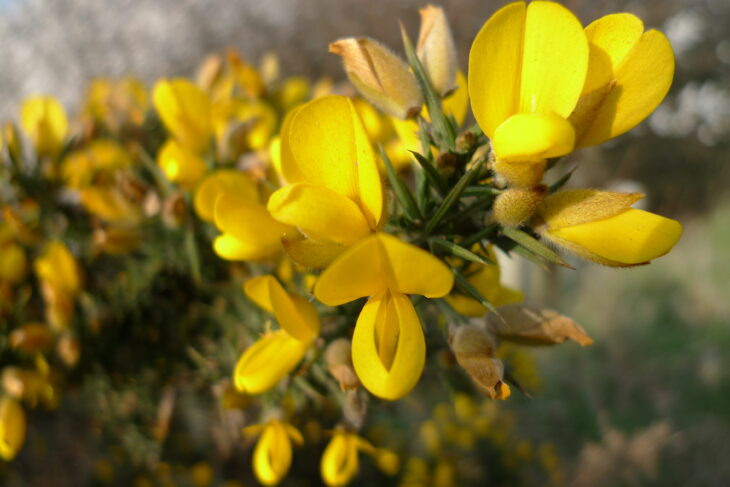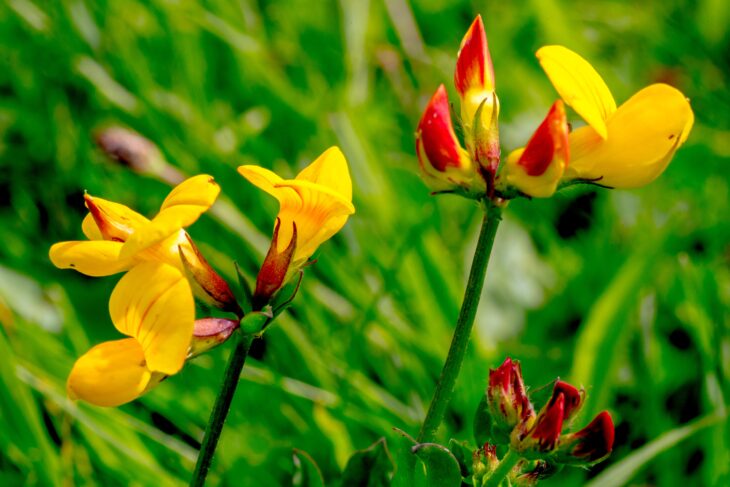The Marvellous Pea Family
Unless you’re into your botany, you might think that the origin of the popular edible garden pea was from a small lineage of wild peas; however in reality the members of the pea family are colourful and diverse. Did you know that Clover, Gorse and Broom are all members of the pea family? One of the things these plants often have in common is the rather unusual shape of their flower: which provides a “landing platform” for incoming pollinators like bees.

Peas are the third largest plant family by species, and part of the reason behind their success may be the way that they obtain nutrients. All plants need nitrogen to grow, and most plants obtain nitrogen from the surrounding soil. The pea family however, has discovered a more reliable method of obtaining nitrogen; by forming a symbiotic relationship with a type of bacteria called Rhizobia, which fixes it directly from the atmosphere. This reliable growing power meant that the pea family (particularly lentils, garden peas and chickpeas) were some of the first crops to be grown by ancient farmers.

So the next time you’re out and about it might just be worth keeping an eye out for wild peas; you might end up seeing more than you expect!
Becca Wilson (Falls of Clyde Seasonal Ranger)
Help protect Scotland’s wildlife
Our work to save Scotland’s wildlife is made possible thanks to the generosity of our members and supporters.
Join today from just £4 a month to help protect the species you love.
Preface
Unless you’re into your botany, you might think that the origin of the popular edible garden pea was from a small lineage of wild peas; however in reality the members …
